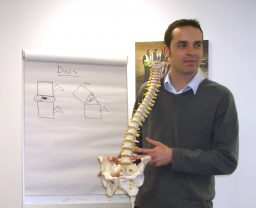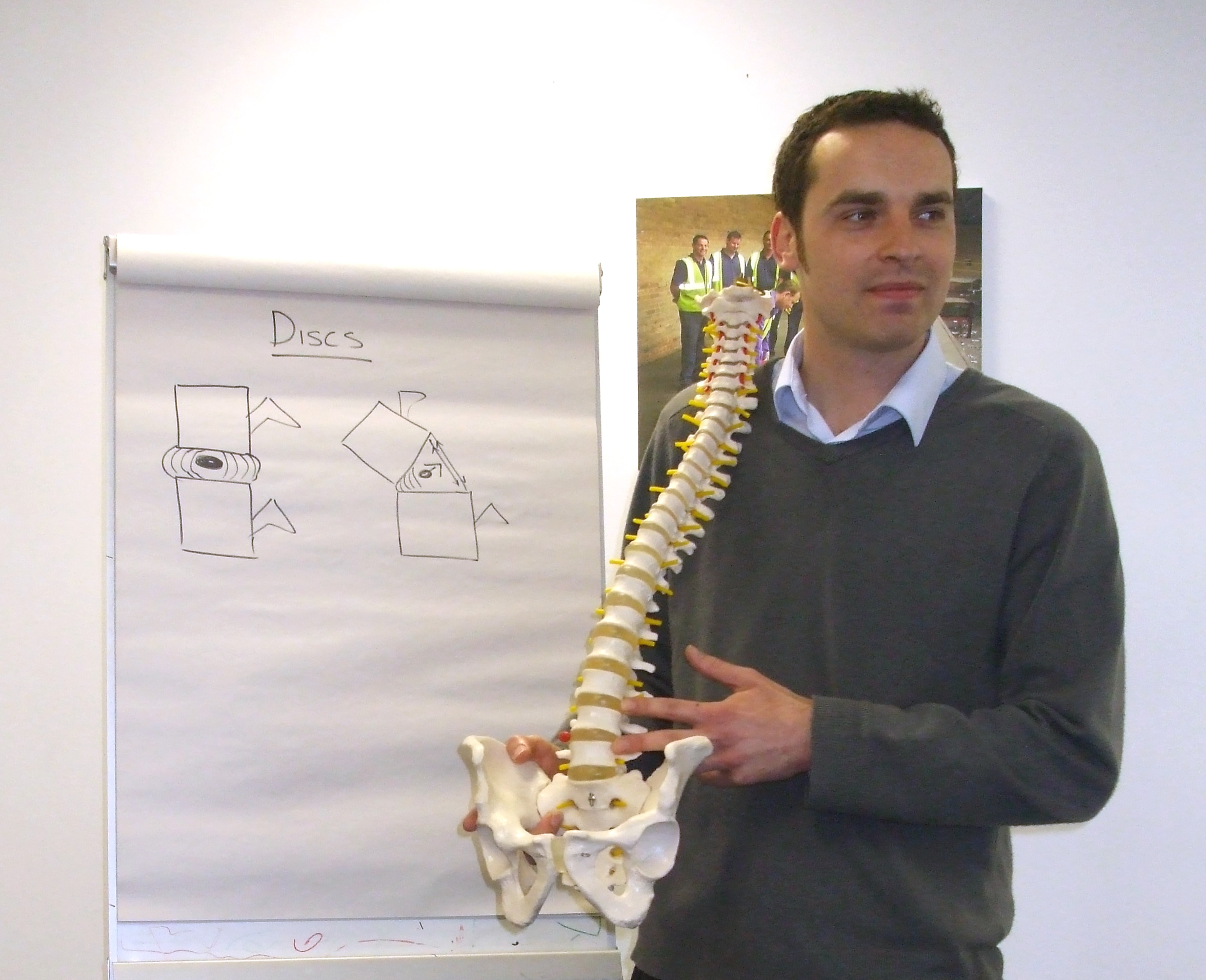Have you ever left a training session feeling fuzzy about the connection between how to do a correct procedure, and why it is necessary to do it that way?

OFI Manual Handling trainer and qualified Osteopath, Laurence Jones.
Then it wasn’t one of OFIs courses! Our instructors have honed their training skills over more than 25 years, and go to great efforts to ensure every participant fully understands how and why particular manual handling techniques are used.
Reinforcing ‘how to do’ something with ‘why it is done this way’ increases the chance of training being retained for longer, as the logical linkage of ‘how’ and ‘why’ makes the material more memorable. It is more likely that the employee is going to perform an action correctly in the future, if they are able to comprehend the negative consequences that could result if they do not do so.
 For example, imagine a learner driver that has been told not to drive too quickly when it’s raining. They understand the instruction, but may not be able to comprehend why they should heed the advice. The message might not sink in, until it has been explained to them that the rain will cause the tyres to have less grip on the road surface and significantly increase the stopping distance of the car, with the possible result being that they lose control of the car.
For example, imagine a learner driver that has been told not to drive too quickly when it’s raining. They understand the instruction, but may not be able to comprehend why they should heed the advice. The message might not sink in, until it has been explained to them that the rain will cause the tyres to have less grip on the road surface and significantly increase the stopping distance of the car, with the possible result being that they lose control of the car.
Our OFI training sessions are run by experienced, physical therapy trained consultants. This allows our trainers to give medically-specific explanations (in easy to understand language), should the training call for it (or delegates demand it). The ability to explain how ‘best practice skills’ relate to our bodies functional anatomy and the conditions that we find in the ‘real-world’, is a strength that feeds the delegates understanding of the issue and empowers the training considerably. This is particularly important when you are training at Instructor level.
Our instructors use a mix of training methods that complement each other and strengthen the key points of the lessons imparted, making it easier, more engaging and enjoyable for all participants to recall the information and put it into action within their working environment.
Instructors should mix research data, anecdotes and case studies
The verbal element of your presentation should be an engaging combination of data drawn from authoritative sources and anecdotes gleaned from your own professional experience. By using real-life examples to complement research findings, you establish your own authority as a seasoned practitioner with valuable lessons to share.
Instructors should complement spoken information with visual media
While you should verbally describe how to do a correct procedure and why it is important to do so, using PowerPoints and diagrammatic handouts to visualise your training lessons supports participants who respond best to easily digestible instructive images to absorb and remember key training points. It also provides a refreshing break from your verbal presentation, supplying a little variety.
Instructors should give physical demonstrations of bad and best practice
OFI instructors use musculoskeletal models to illustrate the damaging effects of poor manual handling techniques. It is important to remember that trainees must understand how not to do something and why it is wrong to do so if they are to fully appreciate best practice and proper technique.
Instructors should involve participants in putting best practice into action
Finally, involve your trainees in practical exercises that enable them to understand how to do the correct procedures, which will simultaneously let them experience for themselves why it is essential that they use them in their daily work activity to keep remain safe, healthy and happy in the workplace.
In this blog series, our expert trainers share their experience and show you how to make your manual handling courses more engaging.
[xyz-ihs snippet=”Newsletter-Subscribe-Medium”]Articles within this series will be published bi-monthly from January 2015. Subscribe to our email newsletter to stay informed.
- Introduction (Advice for Manual Handling trainers – How to make your courses more engaging).
- Tailor your course to fit your audience.
- Apply the ‘Stages of Change’ model to your training.
- Make your course material engaging & mix up your training methods.
- Personalise your training with anecdotes and case studies.
- Explain the ‘why’ behind the ‘how’. (this page)
- Make ‘practical’ a key component of your training.
- Follow up your training with feedback and course evaluation.








